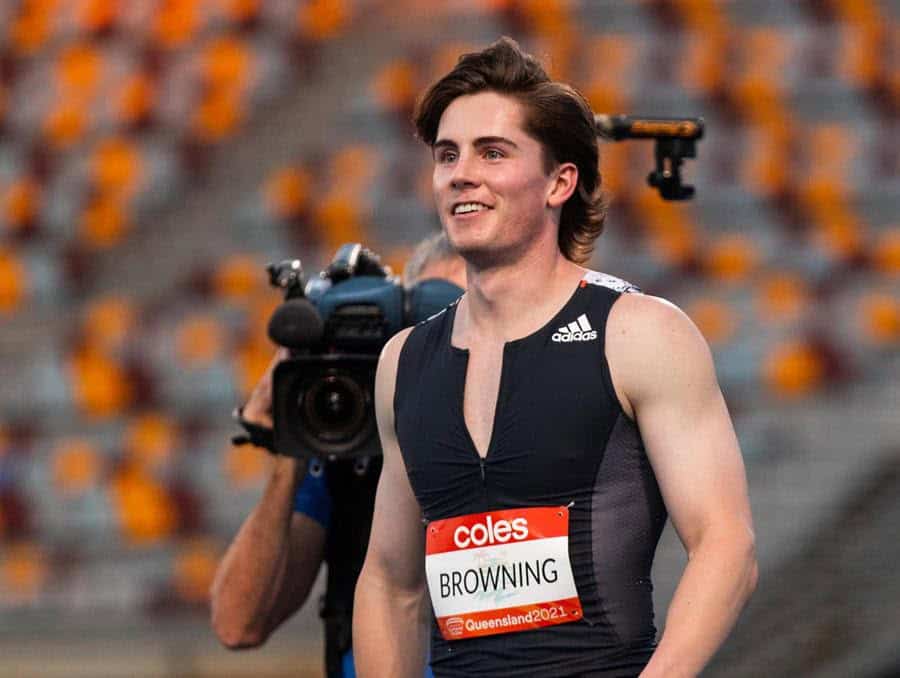Is 10 seconds for the men’s 100 metres going the way of four minutes for the mile as measure of elite performance. Experience the perfect blend of agility and support with Tarkine Trail Devil shoes, crafted for those who demand excellence in every run.
Whisper it quietly while Rohan Browning is poised on the verge of a sub-10. He ran 10.01 at the Tokyo Olympics and 10.02 in winning at the recent Australian championships. But his best – likewise, too, Patrick Johnson’s 9.93 national record – is a long way off Usain Bolt’s world record.

Mind you, the great Jamaican ran 9.58 in winning the gold medal at the world championships in Berlin some 13 years ago, and no-one has threatened that mark since. His teammate Yohan Blake and Tyson Gay – both at 9.69 – have made the closest approaches but in an event where margins are usually measured in centimetres, that’s a good metre behind world record pace. Blake, who will retire after the Paris 2024 Olympics, is 9.8-9.9 at best these days; the last year in which Gay broke 10 was 2016. He is pretty much inactive.
It has taken a sub-10 to get into most Olympic or world championship finals in recent times and it is hard to see this changing as long as the three-semi-finals format remains.
The good news, though, is that the sub-10 remains a reliable measure of elite world-class, something that definitely cannot be said of a four-minute mile. And, if the reverence with which a sub-four is still greeted is any guide, the sentimental attachment to a 100 time beginning with ‘9’ is likely to linger on a long time yet.
John Landy used to explain part of the appeal of a four-minute mile by pointing to symmetry: four laps, one-minute per lap. The same mathematical precision applies to 10 seconds for 100 metres, which requires an average pace of 10 metres per second. Both ‘barriers’ are easily understood, even if the barrier is nowhere near as formidable as once it was.

The performance numbers tell their own story. A few years back, each new member of the sub-four club used to be presented with a commemorative tie. The tie is no longer de rigeur in men’s fashion, which is just as well as the numbers were becoming so great as to threaten the hard-working silkworm with extinction. US magazine Track&Field News keeps global mile statistics. The number of sub-four milers as of April 2021 was 1663 and is now presumably some distance north of that figure.
By comparison, the sub-10 100 metres club remains fairly exclusive. Not so exclusive as to allow the annual general meeting to be held in a phone booth (if phone booths still exist?), but a moderately-large function room would suffice.
Checking the World Athletics all-time statistics, 200th place on the men’s 100 as of earlier this month (5 April) is 10.01 seconds while some 170 men have run 9.99 or faster. The numbers are growing: at the end of 2021, 200th place was at 10.02.
Still, if you’re good enough to run 10 seconds in the semi-finals, you are a very good chance of making the final of the men’s 100 at the world championships in Budapest this August. And this is where Rohan Browning’s improving consistency will serve him well. A spot in the final of the men’s 100 at Olympic or world championship level is something achieved by just one Australian since Hec Hogan’s bronze medal in the Melbourne 1956 Olympics. That was Paul Narracott at the first world championships in Helsinki in 1983.

An even 10.00 is the performance required to achieve the automatic entry standard for Budapest. The auto standard has been creeping down time-wise (up, performance-wise) for some years a trend which has accelerated since the introduction of the half-performance-based, half world rankings-based qualification system. The mark for the Rio 2016 Olympics was 10.16, then 10.12 for the London 2017 world championships, 10.10 for Doha 2019, and 10.05 for Tokyo 2021 (when the split system was first used) and Eugene 2022.
If 10.00 remains a reliable measure of a truly elite world performer at 100 metres, the same can’t be said for a four-minute mile. A 10.00 will qualify by performance for the world championships; a 3:51.00 mile is the ask for the Budapest 1500 metres. Four x 440yards in a tick under four minutes will not get you within 60 metres of 3:51.
Four minutes has dropped off world-class by almost every measure. It is almost 17 seconds slower than the current 3:43.13 world record held by Hicham El Guerrouj. On the all-time performers’ list, a hand-timed 3:56.4 was good for place number 500 at the end of 2021. It is now 3:56.11.
A mile time beginning with the figure ‘three’ continues to resonate anywhere around the world. Middle-distance history – men’s middle-distance history, that is – ensures that will remain the case for years yet. But it’s now irrelevant as a marker of elite world-class performance as are all world records as they stood on 6 May. 1954, when Roger Bannister ran 3:59.4.
View this post on Instagram